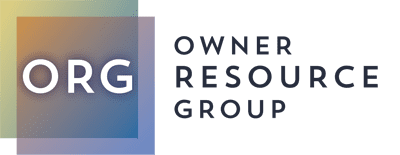COVID-19 has impacted the way organizations do business in many different ways. For some, it has dramatically adjusted their perceptions of how—and where—their employees do their jobs. While for others, it has forced a thorough re-evaluation of how they work with customers, suppliers and their extended supply chains. Here’s a glimpse at how three of our Partner Companies have been able to pivot successfully in the face of the challenges we’re all currently facing.
OTR Wheel: Adapting through global shutdowns and reduced demand
In January 2020, OTR Wheel Engineering Inc., a tire and wheel set manufacturer, was on track to hit their fiscal 2020 target revenues. But that all changed in February, when their facility in China was impacted by COVID-19. Business activity significantly pulled back across the country and interprovince travel restrictions greatly disrupted supply chain logistics related to freight and employees traveling back to operational hubs from the Chinese New Year holiday. OTR’s leadership quickly mobilized and began leveraging other manufacturing facilities across its Asian footprint in Sri Lanka and Thailand to ease logistical issues. By late March, the pandemic had set in across the United States causing significant reduction in production capacity across the industrial universe and many of OTR’s key customers had shut down their facilities for multiple weeks.
The beginning of the pandemic was a very confusing time for everyone, and manufacturers were no exception. OTR’s leadership responded swiftly and aggressively in retaining its critical status to keep operations up and running to continue serving customers. Management reconfigured production schedules to align with demand volume and mix. In addition, heavy emphasis was paid to managing working capital so as to allow the Company to remain nimble in an uncertain time.
OTR leadership leveraged its strong relationships with suppliers to strategically extend and recalibrate payment terms. Management was able to curtail inventory purchases and use stock on-hand for production needs. It continuously engaged with customers to ensure the Company was operating with the latest demand guidance given the ever-evolving landscape. In addition, management heavily scrutinized and curtailed discretionary operating and capital expenses in order to preserve dry powder and flexibility. With ORG’s help, management built a sophisticated 13-week working capital and cash flow forecast to monitor liquidity and availability in order to stay in front of any potential issues.
“With revenue dropping, we had to reduce expenses and concentrate on our working capital,” says Sandro Pagliarulo, OTR Regional President. “We reduced headcount as minimally as we could and asked our workforce to be flexible with their hours to align with the reduced demand. We stopped all capital expenditures, looking at every single expense line to see what could be done to reduce costs. With this focused effort, we managed to reduce our total SG&A by 24 percent compared to the same period last year. We are very proud of our team for helping us make this happen, and for their understanding during these difficult times.”
GC Services: making work from home an essential part of their future
GC Services, an outsourced customer care and accounts receivable management provider, is another example of quick thinking during the shutdown. After stay-at-home orders were issued in a number of cities and states, GC Services moved most of their 4,000 contact center employees to an at-home model. Within 10 days, they had 1,200 employees working from home. In a few weeks, that number jumped to 3,000, with only essential roles still coming into offices (which are fully equipped with proper social distancing and hygiene measures).
“Our focus is providing a quality customer experience while maintaining strict security and regulatory compliance,” says Mark Schordock, GC Services President. “With agents across multiple locations, we quickly determined how to handle increased inbound and outbound calls while our people’s lives were in turmoil. Allowing them to continue working while complying with social distancing and shelter-in-place orders has been positive for everyone involved.”
GC Services has been in business since 1957, but until quite recently, they were encumbered by legacy, paper-based processes, and weren’t prepared to operate in the kind of digital environment required to compete in a predominantly digital marketplace – or to make a work-from-home model a success. But in 2015, they partnered with ORG to modernize their operations. ORG has helped them adapt to a digital world and do business in a more sophisticated way. They streamlined IT, brought in outside expertise to bolster sales efforts, upgraded the company’s digital capabilities – and without realizing the challenges the future might hold, set GC Services up to thrive during a global pandemic.
Using management dashboards that are location-agnostic, they are able to track agent performance. By utilizing sophisticated monitoring software, they can observe sensitive transactions and capture login and logout times. Workstations are secure and limit certain activities to optimize productivity. And for callers who aren’t comfortable speaking to an at-home agent, they have workflows to place those clients in queue to talk to an in-office representative.
GC also quickly increased their connectivity bandwidth, and reps are well-resourced to succeed from home from an IT perspective. For this company, pivoting quickly to a work-from-home model has increased productivity, engagement and employee retention – and changed the way the company works on a permanent basis.
“WFH is a model that will be successful beyond the pandemic,” says Schordock. “We are using it to attract and retain quality agents, both in emergency situations and in more ‘normal’ times. I’m confident that the customer experience industry will emerge from COVID with a more resilient workforce, better processes to adapt to change, and a confidence that it can deliver excellent experiences, even in the toughest situations. Yes, these are very challenging times for our industry, but we will emerge much, much stronger.”
Tulip Richardson Manufacturing: heightened customer communication is changing the game
Tulip Richardson Molding (TRM), a manufacturer of industrial products most notably for the lead-acid battery industry, has also found the pandemic to be a catalyst for improving their customer relationships.
“Customer communication is essential,” says Steve Dyer, TRM president and COO. “Our sales teams have been conducting daily and weekly calls with customers to stay in lockstep with their forecasts, manage inventory, and keep up with daily and hourly changes. They are so tied in now that as the customer’s sales team starts to work hot quotes, they give us a heads-up, and they would never have come to us before. This is helping us tighten the supply chain even further.”
Like GC Services, TRM has also learned that doing business virtually has its place.
“This experience has shown us that co-location and proximity are not as critical as we thought they were,” says Dyer. “It’s making us ask how much of our SG&A structure is actually the value-added activity we thought it was.”
No matter what the situation, having business flexibility and being adaptable to new ways of working can help you overcome challenges that might derail your competitors. If you need help building flexibility into your operations or strengthening your business to keep it adaptable and resilient, ORG can help. Connect with us to see how a strategic partnership can help you get stronger, grow faster and meet your specific challenges head on.



